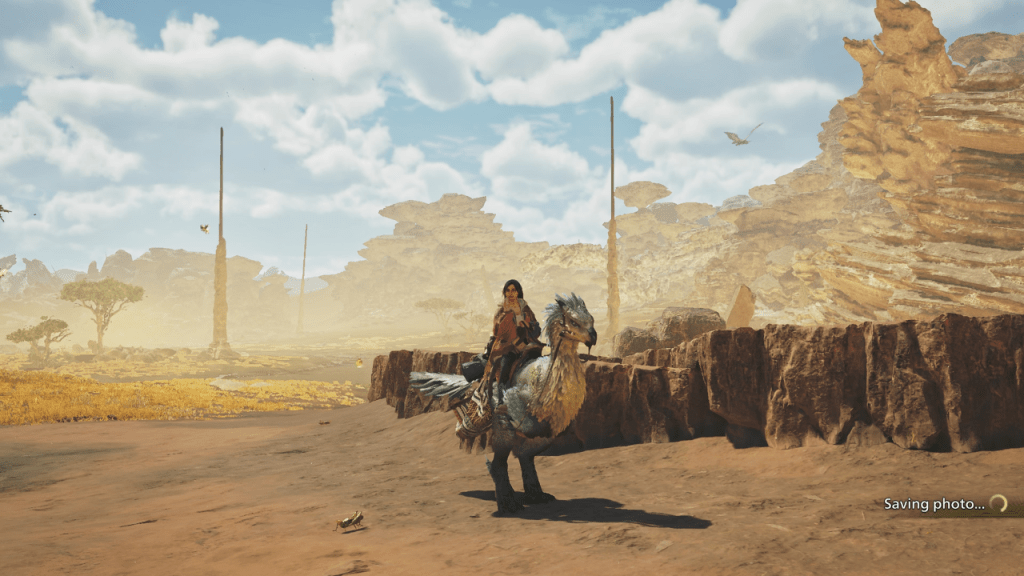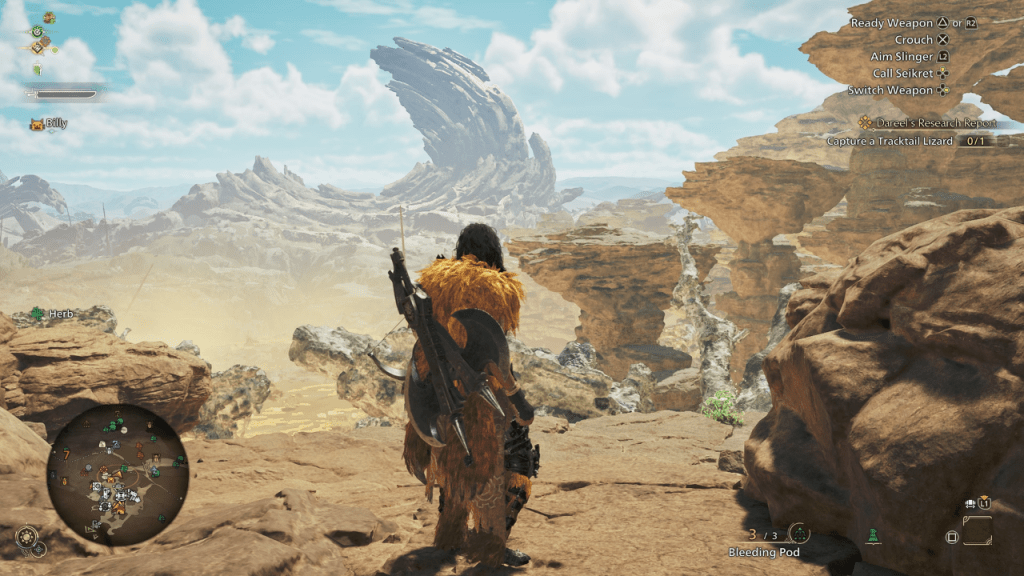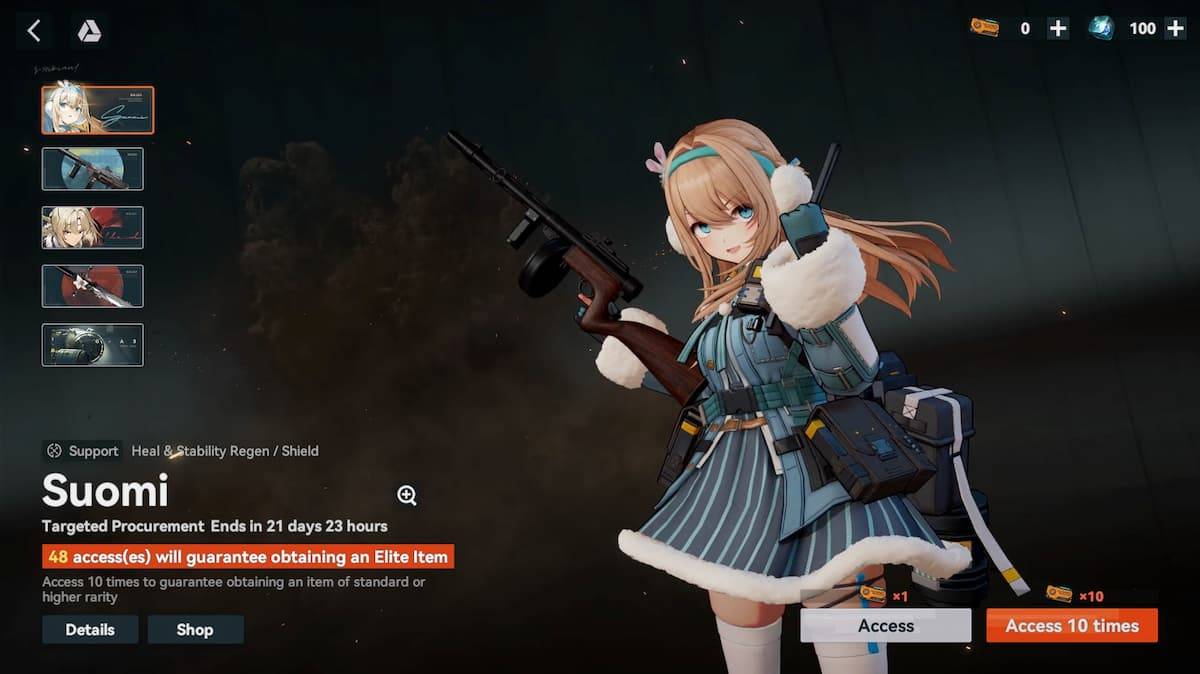Monster Hunter Wilds: Seasons and Weather Impact Explained
In *Monster Hunter Wilds*, the seasons and weather of the Forbidden Lands introduce dynamic elements that significantly influence both the game's visuals and gameplay mechanics. Understanding these environmental shifts is crucial for any Hunter looking to navigate the challenges of this wild world effectively.
Monster Hunter Wilds Seasons, Explained

*Monster Hunter Wilds* features two distinct seasons that govern the weather patterns in the Forbidden Lands: Fallow and Plenty. The game begins in the Fallow season, characterized by a harsh environment with severe weather conditions and a scarcity of resources. This scarcity leads to increased aggression among monsters, who are more likely to attack each other, making the Fallow season a challenging time for Hunters.
In contrast, the Plenty season offers a more welcoming atmosphere, with warmer weather and an abundance of flora. The environment becomes more colorful, and small monsters are less hostile and less likely to travel in packs. During Plenty, Endemic Life and various plants are more plentiful, making it a time of celebration for both the villagers and players of *Monster Hunter Wilds*.
Between these seasons, brief but intense weather events known as Inclemency occur. These events heighten the intensity of the weather and set the stage for epic battles against Apex Predators. For instance, during the Pinnacle of the Pack Assignment, Hunters face the Alpha Doshaguma amidst the Sandtide, a dramatic lightning-filled sandstorm. These unique weather events add an extra layer of excitement and challenge to encounters with Apex Predators throughout the game.
How To Check the Seasons and Weather in Monster Hunter Wilds

Monitoring the seasons and weather in *Monster Hunter Wilds* is straightforward thanks to the game's HUD and map features. The HUD displays icons in the bottom left corner that indicate the current time of day and season. For a more detailed view, you can access the map and press the prompted button to view the Environment Overview, which provides comprehensive information on the current weather and season.
Additionally, Optional Quests in *Monster Hunter Wilds* are set in specific times of day and seasons, temporarily transporting you to these conditions regardless of the current season in the main game.
How To Change the Season and Weather in Monster Hunter Wilds
Given the significant impact of seasons on the flora and fauna of the Forbidden Lands, Hunters may find it advantageous to switch between Fallow and Plenty depending on their objectives. Fortunately, *Monster Hunter Wilds* allows you to change the season and weather.
To do this, you need to set up your tent and rest. Once inside your tent, navigate to the BBQ Menu and select the Rest option. Here, you can adjust the Environment and Time settings for when your Hunter wakes up.
However, resting comes with a cost of 300 Guild Points and is only available to Hunters of High Rank. It's also important to note that you cannot rest during an active quest.
With this comprehensive guide, you're now equipped to handle the dynamic seasons and weather of *Monster Hunter Wilds*. Whether you're bracing for the harshness of Fallow or enjoying the abundance of Plenty, these environmental shifts will add depth and excitement to your hunting adventures.
*Monster Hunter Wilds is available now on PlayStation, Xbox, and PC.*
-
 Mar 17,25All Split Fiction Achievements & How to Unlock Them Dive into the captivating co-op adventure Split Fiction from Hazelight Studios! This guide outlines every achievement, ensuring you and your partner conquer every challenge. While some trophies are earned naturally through the story, many require thorough exploration and unique actions. Use this g
Mar 17,25All Split Fiction Achievements & How to Unlock Them Dive into the captivating co-op adventure Split Fiction from Hazelight Studios! This guide outlines every achievement, ensuring you and your partner conquer every challenge. While some trophies are earned naturally through the story, many require thorough exploration and unique actions. Use this g -
 Mar 19,25How Does Dragon Ball Daima’s Finale Explain Goku Never Using Super Saiyan 4 in Super? The climactic battle in Dragon Ball Daima's finale pits Gomah against Goku, showcasing Goku's newly acquired form. This episode naturally led many fans to anticipate an explanation for Super Saiyan 4's absence in Super. So, how does the finale address this?In episode 19, after Glorio's wish restore
Mar 19,25How Does Dragon Ball Daima’s Finale Explain Goku Never Using Super Saiyan 4 in Super? The climactic battle in Dragon Ball Daima's finale pits Gomah against Goku, showcasing Goku's newly acquired form. This episode naturally led many fans to anticipate an explanation for Super Saiyan 4's absence in Super. So, how does the finale address this?In episode 19, after Glorio's wish restore -
 Jan 16,25Girls' Frontline 2: Exilium Tier List Released Another free-to-play gacha game, another character ranking to guide your investment choices. This Girls’ Frontline 2: Exilium character tier list helps you prioritize which characters are worth your resources. Girls’ Frontline 2: Exilium Character Tier List Here's a breakdown of currently available
Jan 16,25Girls' Frontline 2: Exilium Tier List Released Another free-to-play gacha game, another character ranking to guide your investment choices. This Girls’ Frontline 2: Exilium character tier list helps you prioritize which characters are worth your resources. Girls’ Frontline 2: Exilium Character Tier List Here's a breakdown of currently available -
 Mar 18,25Avowed Best PC Settings for Max FPS *Avowed*, a visual masterpiece, immerses you in a richly detailed world. To fully appreciate its stunning graphics without sacrificing performance, optimizing your PC settings is key. This guide helps you strike the perfect balance between breathtaking visuals and smooth gameplay.Recommended Videos
Mar 18,25Avowed Best PC Settings for Max FPS *Avowed*, a visual masterpiece, immerses you in a richly detailed world. To fully appreciate its stunning graphics without sacrificing performance, optimizing your PC settings is key. This guide helps you strike the perfect balance between breathtaking visuals and smooth gameplay.Recommended Videos
